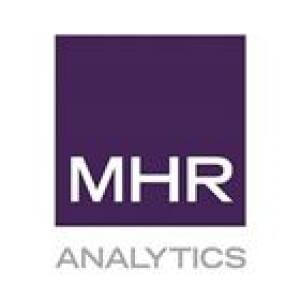20 October 2019
How will IFRS 16 impact public sector?

IFRS 16 introduces significant changes in the treatment of leases for financial reporting purposes. Given the estimated 75,000 leases in place right across the public sector, finance officers across a wide range of public entities need to become familiar with this new reporting standard.
We’ve created this exclusive FAQ to help guide you around how you can prepare as a public sector organisation. We’ll explain what has changed, when the new standard applies, and how this will impact public sector reporting procedures.
FAQs:
1. What is IFRS 16?
2. What are the exemptions?
3. What is the definition of a lease?
4. How do peppercorn leases work?
5. How do low-value leases relate to materiality considerations?
6. What will IFRS 16 mean for contracts with both lease and service components?
7. What discount rates do I apply?
8. How long do I have to get compliant?
9. How will IFRS 16 impact public sector?
10. What challenges are public sector likely to encounter?
11. How can my organisation better prepare?
What is IFRS 16?
The current accounting model draws a distinction between finance (capital) leases which are captured by the lessees on their balance sheet, as opposed to operating leases, which are not captured.
It removes this finance/operating lease distinction. Unless one of the exceptions applies (see below), lessees must recognise every lease on the balance sheet. The lease itself is listed as a liability, while the subject of the lease (for instance, property or equipment) appears in the asset section.
The new standard is designed to bring improved levels of accuracy and transparency to the reporting process. In practical terms, lessee organisations will appear more asset-rich, but also more indebted than under the current regime.
What are the exemptions?
There are two recognition exemptions:
Short-term leases. These are defined as leases with a term of 12 months or less. Common examples within the public sector include property leases of short duration, software licences and vehicle hire arrangements. Any lease that carries an option to purchase cannot qualify as a short-term lease.
Leases of low-value assets. This is based on the value of the underlying asset when new, regardless of the age of that asset at the time of the lease. There is no numerical threshold to define ‘low-value’. However, some practical examples of items likely to be deemed low-value include tablets and personal computers, small items of office furniture and telephones. It explicitly states that a car would not qualify as low-value.
What is the definition of a lease?
A lease is defined as a contract which “conveys the right to control the use of an identified asset for a period of time in exchange for consideration”. There are two important elements to this:
“Identified asset”. In most cases, the asset is identified if it is explicitly specified – e.g. referred to by name in a contract. Depending on the circumstances, if the supplier has the right to substitute the asset during the period of use, it may not be deemed as ‘identified’.
“Control”. The question of control is decided on whether the lessee has the right to obtain “all of the economic benefits” from use of the asset and the right to direct its use.
Broadly, if you can decide how and for what purposes the asset is used, you have control over it.
Public sector-specific adaptations of the definition of a lease
For public sector bodies, the Government Financial Reporting Manual (FReM) broadens the standard IFRS 16 lease definition to include two further types of arrangement. These are as follows:
1. Intra-UK government agreements
This covers the type of situation where public sector bodies enter into ‘lease-like’ arrangements with each other. These are not legally enforceable but are similar in nature to enforceable contracts.
As an example, a local authority enters into an agreement with a central government agency. Under this agreement, the government agency has the right to occupy two specified floors in a building owned by the local authority for a period of two years.
2. Agreements with nil consideration
These are lease-like agreements whereby one public body conveys the right to use an asset to another public body with no requirement for payment.
How do peppercorn leases work?
This describes arrangements whereby the amount paid by the lessee under the lease is nominal: in other words, significantly below market value.
The FReM states that from now on, assets under peppercorn leases will need to be measured at their current value, based on the way in which the asset is being used by the lessee or else based on the asset’s fair value. The main exception is in relation to ‘heritage assets’, which need to be measured in accordance with the specific rules relating to this type of asset.
How do low-value leases relate to materiality considerations?
Alongside the low-value exemption, lessees should also take into account the separate general materiality consideration that applies to all reporting standards. Generally, this requires reporting officers to consider whether the inclusion of information in a financial statement will have a material effect on that statement as a whole. It’s designed to avoid situations whereby significant time and effort is expended in including items without a corresponding benefit in the quality of the reported information.
There may be circumstances where even though an asset might not qualify as ‘low value’, it could be regarded as immaterial. If applicable, in this case, you won’t be required to apply IFRS 16 to these immaterial leases.
What will IFRS 16 mean for contracts with both lease and service components?
Some contracts include the right to use an asset (the lease component) in addition to the provision of services connected to that asset (the service component).
For public sector bodies, examples of this include property leases with provisions covering common area maintenance, and specialist equipment hire arrangements that include on-call support.
As a Public sector lessee, you’ll have the option of separating the lease and service components so only the lease elements will be capitalised in the balance sheet. It includes detailed guidance for this.
Separation of these components is not compulsory, however, there is still the option of leaving the service and leasing elements together and accounting for them as a single lease. This option will prove useful if separation is likely to be too costly or complicated.
What discount rates do I apply?
Lease liability is discounted using the rate implicit in the lease. Where this cannot be determined, the lessee’s incremental rate of borrowing is used – i.e. the rate you would have to pay over a similar term and with similar security in a similar economic environment.
For public bodies, where the rate to be applied cannot be determined from the lease itself, as the lessee, you would be required to use the HM Treasury discounted rate unless you can show that another discount rate would more accurately reflect your incremental borrowing rate.
How long do I have to get compliant?
It came into effect on 1 January 2019. However, for UK public bodies that use IFRS accounting standards, the adoption date was deferred until the financial year beginning 1st April 2020. Due to the situation surrounding Covid-19 this date has been further pushed back to 1st April 2022.
How will IFRS 16 impact public sector?
Impact Modelling
In practical terms, lessee organisations are likely to appear more asset-rich, but also more indebted than under the current regime. In light of this, it is important to determine the extent to which the new standard will impact your financial targets and key performance indicators. This will involve centralising all lease data onto a central platform and then modelling the data based on various leasing accounting scenarios. Discover lease accounting software for IFRS 16 compliance.
Exemptions
For public sector bodies, it does not feature a set-in-stone threshold for determining whether an asset is ‘low-value’. Financial officers will need to review their asset portfolios alongside the official guidance to determine which leases will qualify for this exemption.
Discount rates
You’ll need to consider the content of individual leases to ascertain whether the discount rate can be determined. If it cannot, you’ll then need to establish whether the Treasury discount rate applies, or whether it would be a more accurate reflection of your incremental borrowing rate.
What challenges are public sector likely to encounter?
Whether you’re a local authority, central government department, quasi-autonomous governmental organisation, an NHS trust or university; it demands much more detailed lease-by-lease analysis for the financial reporting processes.
All of this is likely to give rise to the following challenges:
Do we have the full picture? There may be multiple leases in play across a single public sector body. You need the ability to store, manage and update this information with ease.
Are we implementing IFRS 16 in an appropriate and consistent manner? In some areas (e.g. whether or not to separate the leasing and service elements in a contract), reporting officers will have some discretion in how to proceed. Having the right modelling capabilities at your fingertips should make it easier to make data-driven decisions that reflect the strategic objectives of your organisation.
Can we handle an increased processing burden? In areas such as asset depreciation calculations, applying the correct interest rate (which of course, may differ from lease to lease) and updating leasehold information, public finance departments will need to look carefully at whether their existing resources are sufficient to meet a potentially larger workload.
How can I prepare my organisation?
CCH Tagetik Lease Accounting is designed to ensure compliance, while providing an effective framework for managing a growing volume of lease accounting data. Learn more about how lease accounting software can help your organisation.
